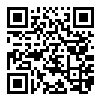 |
 |

|
In general, wood charcoal is a substance obtained by partial burning or destructive distillation of wood. It is largely pure carbon. Wood charcoal is prepared by heating wood in the absence of oxygen. In this process volatile compounds in the wood (e.g., water, hydrogen, methane and tars) pass off as vapors into the air, and the carbon is converted into charcoal. (Tar is a generic name for big, smoky, sticky molecules that form liquids when they're cool. The tars, in particular, can contain carcinogenic compounds, like benzo-A-pyrene.) With the volatile component driven off, you are left with wood charcoal that is about 20 to 25-percent of the original volume of the wood. It's chiefly carbon, with traces of volatile chemicals and ash. When it burns, it won't produce as much smoke as burning wood, and it will burn long, hot and steady. Charcoal, being almost pure carbon, yields a larger amount of heat in proportion to its volume than is obtained from a corresponding quantity of wood. |
|
As far as cooking is concerned, there are two main forms, lump charcoal and briquettes. Lump charcoal is charcoal which has not been
formed into briquettes. Briquettes are the pillow shaped little pieces of compressed ground charcoal.
There are also a few brands that produce extruded charcoal in which charcoal powder is extruded into round or hexagonal logs.
|
|
Well, this FAQ is about lump charcoal, so we aren't going to wax eloquent about briquettes. But admit it. You really want to
know what is in Kingsford briquettes, don't you? Well, according to Kingsford, here is what is in their briquettes and what
each ingredient is used for: wood char (heat source), mineral char (heat source), mineral carbon (heat source), limestone
(uniform visual ashing), starch (binder), borax (press release), sodium nitrate (ignition aid), sawdust (ignition aid).
If you hang out on any of the barbecue forums on the internet, you will find lots of folks complaining about the borax and
coal and limestone. You don't often hear of people complaining about the mineral char. What is mineral char? "A soft,
brownish-black coal in which the alteration of vegetable matter has proceeded further than in peat but not as far as in
bituminous coal. Also called brown coal. Has empyreumatic smell." What is an empyreumatic smell? "The peculiar smell
and taste arising from products of decomposition of animal or vegetable substances when burnt in close vessels." Nuff said?
But back to the question at hand. Should you use lump or briquettes? There is no one answer for everyone. If you are
using a ceramic cooker, the low ash production of lump charcoal is very important. Ceramic cookers have a fire bowl
holding the charcoal. As the charcoal burns, the ash falls down into the bottom of the bowl. There isn't room for a whole lot of ash.
Lump charcoal burns hotter and faster than briquettes, if given an unlimited air supply. If you can control
the air flow through your cooker, lump will burn at whatever rate and temperature that you allow it to. If you
can't control the air flow in your cooker, then you may need to use the slower-burning briquettes in order to
keep temperature under control.
Another consideration is that briquettes tend to be cheaper than lump charcoal.
|
|
Basically, you will find three types of wood used to make lump charcoal: kiln dried lumber scraps, saw mill scraps, and pieces of wood not sawn or processed, such as limbs. We'll call this "natural" wood, for lack of a better term. |
|
We would place limbs/natural wood and saw mill scraps in the same category. They are both unprocessed wood. Flooring/molding scrapsare made from kiln dried wood and seems to have less smokiness which some folks consider to be a plus. The flooring scrap also tends to burn faster. Some have reported that it also tends to break up more easily and thus you end up with more chips/dust than with natural wood lumps. The decision to use flooring scrap or natural wood is probably one you have to make for yourself. |
|
There are literally dozens and dozens of brands of lump charcoal. The simplest answer to this question is to direct you to the Lump Charcoal Database where many of the brands have been reviewed and rated. |
|
Lump charcoal is made by taking wood, usually limbs, branches, slabs from lumber mills, scraps from milling operations, etc. and heating this wood in a closed container in the absence of oxygen. Here's a link to a video that aired on KETC, the public television station in St. Louis: Charcoal Making. Note that this is the same company that was featured in an Episode of "Dirty Jobs" on the Discovery Channel. |
|
Since making lump charcoal is often done under somewhat crude conditions, it is normal to find a few rocks or pebbles in lump charcoal. However, a few other oddball items have been found like a mouse, human hair, a tootsie roll wrapper, varnished wood, and black shiny objects commonly referred to as moon rocks. Personally, in over two years and hundreds of pounds of lump charcoal, I've found 3 rocks and a tootsie roll wrapper. It shouldn't be a great concern. |
|
Don't use starter fluid. Why? It isn't cool. It pollutes the air and is banned in some localities. If you don't allow it all to
burn off, it will flavor your food. And, because you don't have to. There are many other ways to start lump charcoal.
You can use parafin fireplace starter blocks. Weber starter cubes. The green gel from Wal*Mart (an alcohol gel made from starch).
Electric starters. Propane sticks. Weed burners. Propane torches. MAP/Pro gas torches. Chimney starters. Heck,
Martha Stewart says you can even use twigs. So why use fluid? In any event, whatever method you use to start the charcoal,
follow the instructions to be found on the product you use.
Personally, we use many different methods, just because we can! If we want a hot fire for searing steaks, we'll put a starter
at the bottom of the charcoal (under the grate in a ceramic charcoal cooker) so as to get the entire load of charcoal burning.
If we want a medium fire, we'll put the starter in the pile of charcoal near the top so as to only start the top charcoal.
If we are cooking low and slow, we'll get a chimney of lump roaring hot and dump this on top of the charcoal in the cooker.
This ensures that a good fire gets started so that the fire doesn't go out. By the time we add our ceramic barrier and the cold meat,
the temperature of the cooker drops significantly and we can then adjust the temperature to the desired low and slow setting we want.
You may find that different methods work better for you than others.
|
|
If you keep it stored in a dry location, the shelf life of charcoal should be indefinite. For what it's worth, Martha Stewart lump comes in a reclosable bag, and Martha says that it will keep for 10 years if you reclose the bag. She doesn't indicate what will happen if you don't reclose the bag. |
|
There are several theories regarding why some brands or even individual bags of lump charcoal contain a lot of chips and dust, while
others do not. The most prevalent theory you will hear is the gorilla theory. Supposedly overly-muscled and underly-brained
gorilla-type mesomorphs are the only persons allowed to handle charcoal at large mega-stores like Wal-Mart and they purposely
toss the charcoal around at specified intervals, stomp on it with large hob-nailed boots at specified intervals, and just in
general abuse the bags of charcoal. So, what left the manufacturer as pristine 100% whole pieces of lovely charcoal is
pulverized into chips and dust by these goons. Well, ok, I sort of exaggerated the theory. But you get the idea, right?
Well, our personal theory is that while any bag of charcoal which has obviously been abused may indeed contain more chips and
dust than when it left the manufacturer, in actuality it has more to do with the original sorting, screening and bagging of
the charcoal by the manufacturer. We have seen some bags of charcoal contain horrible amounts of chips and dust, while other
bags from the same load, from the same manufacturer contained very small amounts of chips and dust. We have seen multiple
bags of charcoal from the same manufacturer arrive containing charcoal which is in pristine condition. Frankly, we strongly
suspect that when you get a lousy bag of charcoal, it is because the manufacturer bagged a lousy bag of charcoal. Either
they fail to adequately screen the charcoal to remove the chips and dust or they fail to screen it at all. Frankly, if
Picnic Charcoal can get a bag of charcoal from Argentina to Texas to North Carolina with barely a few tablespoons of chips
in the bag, there is no reason why other manufacturers can't provide similar quality.
|
|
We have never gotten any lump charcoal wet, so we don't speak from first hand experience, but we have read several sources that say if you lay it out in the sun in a thin layer, it will dry out and can be used. |
|
We have seen these warnings on various fire department "Summer Safety" webpages, etc. and can report that it is all urban legend. If you want the details you can read The Myth About Storing Wet Charcoal. |
|
Most charcoal FAQs start out by telling you why you shouldn't do it, and then at the bottom of the answer, they finally tell
you not to do it. We chose to tell you not to do it first and then explain why. First of all, Why does every bag of charcoal
under the sun contain a warning not to use it indoors? Don't do it. People die. It gives off carbon monoxide (CO) which
is odorless and can kill you. Don't do it! (Ok, if you have a properly ventilated installation, you can probably cook with
charcoal indoors, but don't do it unless you have an expert install proper venting, etc. etc. etc.) Did we mention,
don't do it? Here is what Tom Clancy has to say about carbon monoxide:
|
|
Well, lots of people seem to think so. We have never tried it, but Big-R on the Big Green Egg forum has made lump.
Here is Big-R's Guide To Making Lump At Home.
And then here are some links to pages on the web that seem to indicate that other people have tried and succeeded:
|
|
Not necessarily. We know that some companies produce their charcoal under the guidelines of the Forest Stewardship Council. Some are made from invasive species. Some are made using wood harvested by coppicing. However, we don't have any specific information as to whether or not the charcoal made in South America and imported into the US for barbecuing is destroying rain forest. However, we have published this letter to our readers about our position on including company environmental records into our ratings, and providing environmental information as a part of our reviews. |
|
Definitely not and we explain why in our article, Does Dense Charcoal Burn Longer? |
|
Definitely not and we explain why in our article, Effect Of Lump Size On Burn Time |
You can support this website by shopping at The Naked Whiz Website Store and Amazon.com
|

